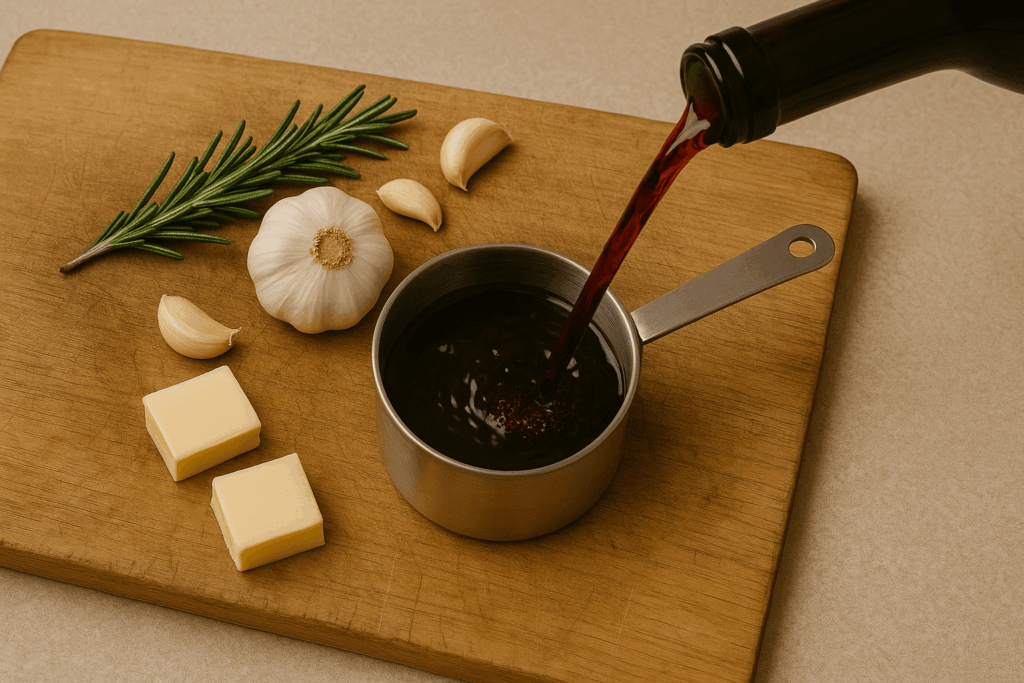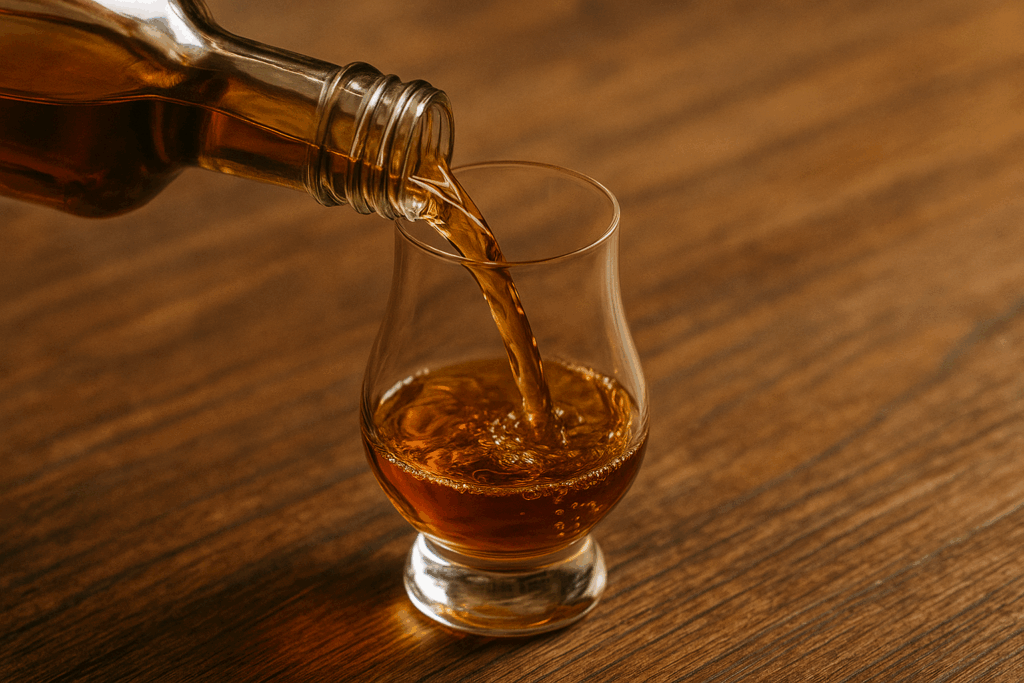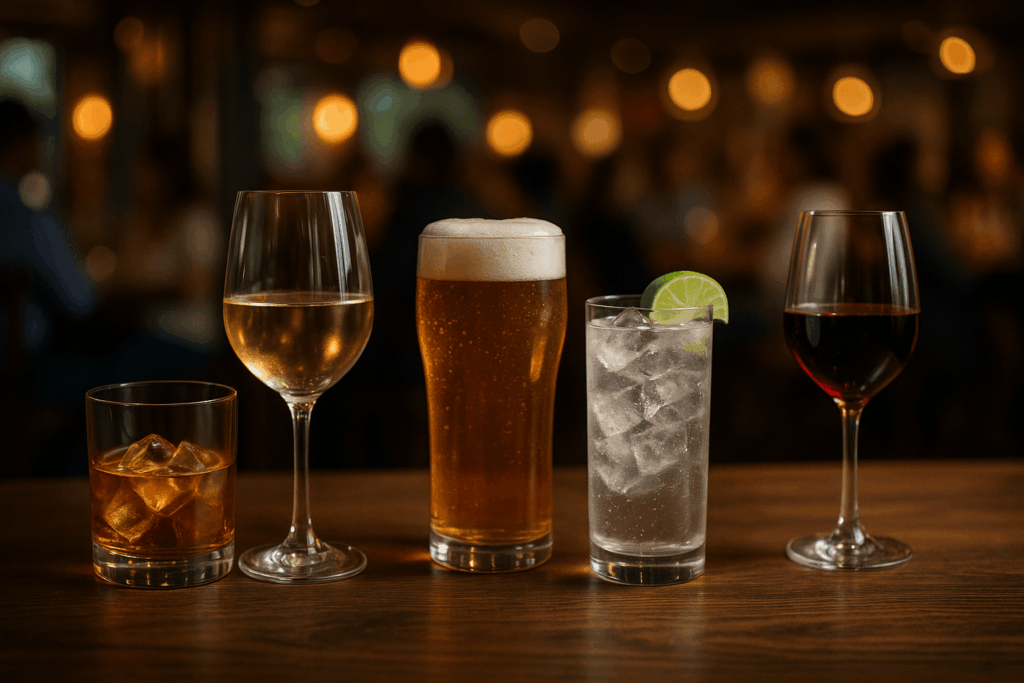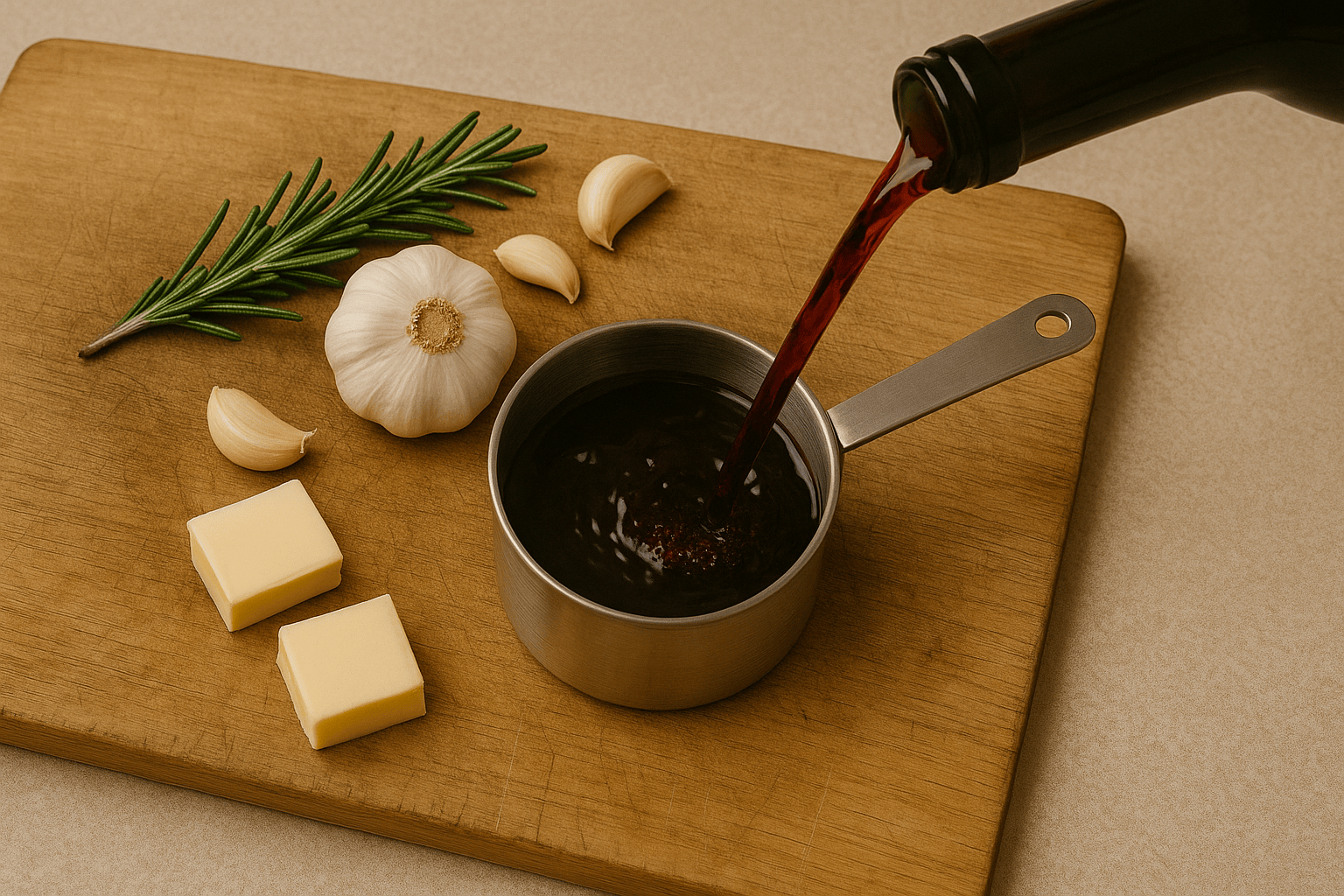
Cooking with red wine has been a staple in kitchens for centuries, adding a depth of flavor that can’t be replicated with water, stock, or vinegar alone. When heated, red wine releases fruity, earthy, and sometimes spicy notes that blend beautifully into sauces, marinades, and slow-cooked dishes.
In this guide, we’ll explore the best red wines for cooking, with specific recommendations for chicken, beef, lamb, pasta, and more. You’ll also learn how to choose the right wine, master cooking techniques using red wine, and discover classic red wine sauces and reductions that can elevate your home cooking to restaurant level. Whether you’re making a rustic stew, a silky pan sauce, or a rich braise, this article has you covered.
How to choose a red wine for cooking
The golden rule for choosing a cooking wine is simple: if you wouldn’t drink it, don’t cook with it. That doesn’t mean you need to splash out on a $30 bottle, the heat of cooking softens some flavors, so a good-quality mid-range wine works perfectly. What matters more is the wine’s character.
Dry wines with moderate tannins and bright acidity tend to work best. A wine that’s too sweet can make savory dishes taste cloying, while one with excessive tannins can turn bitter after reducing. For lighter dishes like chicken or pork, a more delicate wine such as Pinot Noir or Grenache works well, while richer dishes like beef stew or lamb shanks can handle a bold Cabernet Sauvignon or Shiraz.
Think also about regional pairings. Italian wines like Chianti naturally suit tomato-based pasta sauces because they share similar acidity and herbal undertones. French wines like Beaujolais or Bordeaux blends fit beautifully into rustic stews or braises. And if you’re unsure, Merlot is a safe, versatile choice that works well in a wide variety of recipes.
Good wine styles for cooking
- Cabernet Sauvignon – Intense and structured, it’s ideal for hearty beef dishes where you want the wine to stand up to bold flavors.
- Merlot – Smooth and approachable with soft fruitiness, it’s versatile enough for everything from lamb casseroles to mushroom risottos.
- Pinot Noir – Light-bodied with bright berry notes, it’s perfect for poultry, pork, or even salmon dishes.
- Zinfandel – Bold, jammy, and sometimes spicy, it’s fantastic for tomato-rich sauces or smoky barbecued meats.
Best red wine for cooking chicken
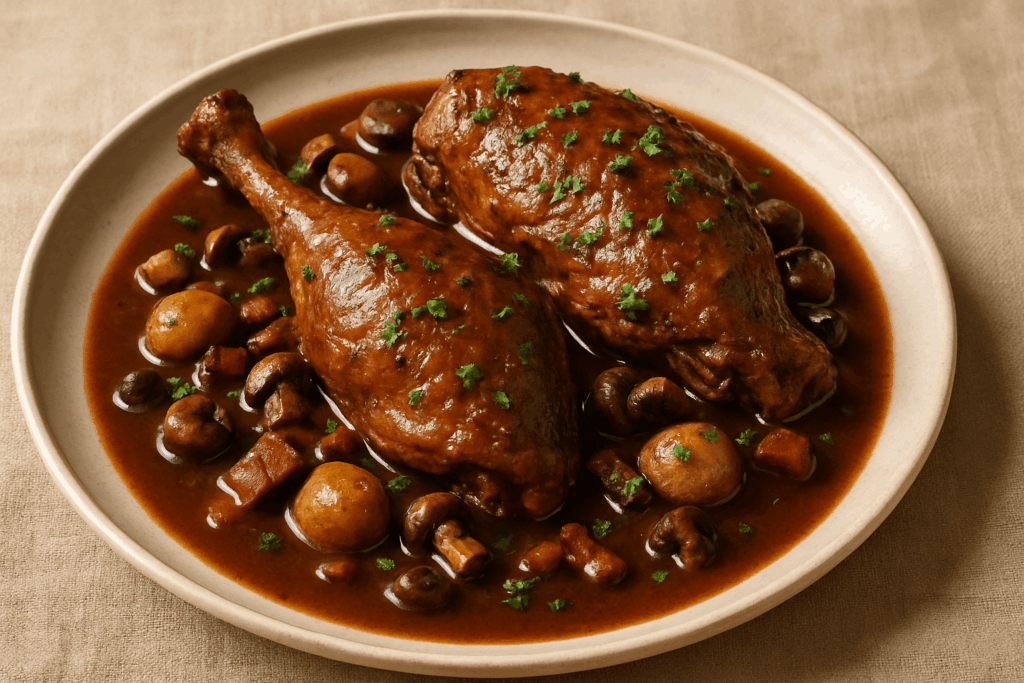
Chicken benefits from lighter-bodied red wines that enhance its flavor without overwhelming it. Too much tannin can clash with the mildness of the meat, leaving a metallic aftertaste. Pinot Noir is a classic choice here, its soft berry notes and gentle acidity complement roasted or braised chicken beautifully, especially in dishes like coq au vin.
Grenache offers a slightly fruitier profile with a touch of spice, perfect for Mediterranean-style chicken dishes with olives, tomatoes, or herbs. Beaujolais, made from the Gamay grape, is another great option. Its light body and fresh red fruit notes work wonders in slow-cooked chicken recipes, bringing a subtle sweetness and depth.
When cooking chicken with red wine, try adding the wine early in the cooking process so it has time to mellow and integrate with the sauce. A splash added at the end can add brightness, but too much at the last moment can taste raw or harsh.
Best red wine for cooking beef
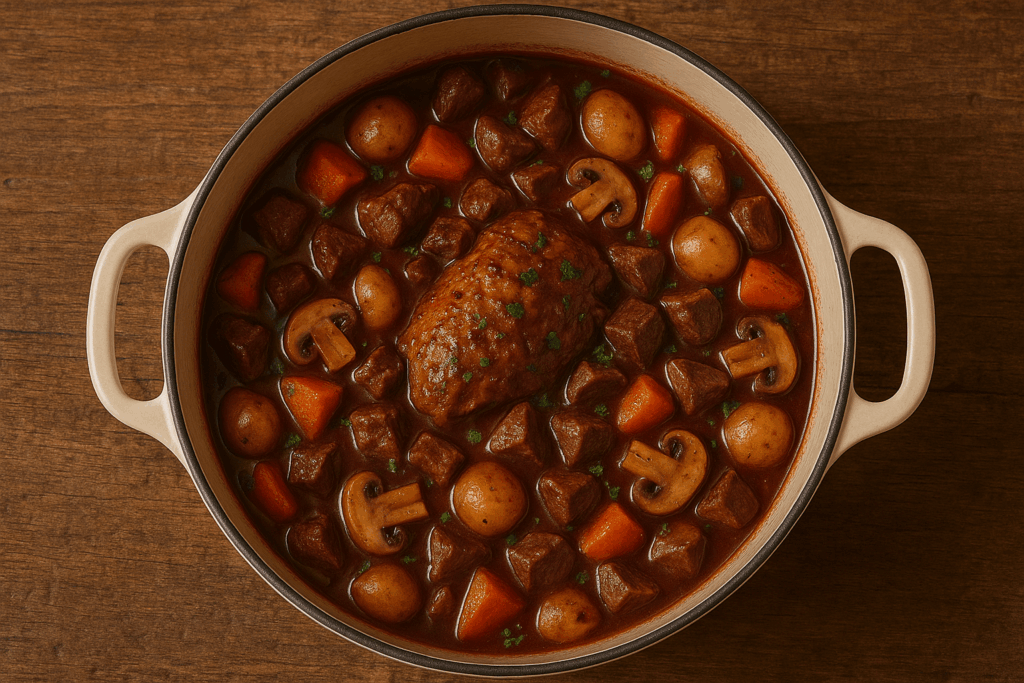
Beef is bold, rich, and often benefits from the structure and intensity of full-bodied red wines. Cabernet Sauvignon is the go-to choice for slow-cooked beef stews, braised short ribs, or pot roasts. Its dark fruit flavors, firm tannins, and hint of earthiness stand up to the richness of the meat.
Merlot, while softer, still brings enough depth to pair beautifully with beef bourguignon, adding a roundness and subtle sweetness that balances savory flavors. Shiraz (or Syrah) brings a peppery edge and dark, almost smoky notes, fantastic for barbecue sauces, grilled steaks, or hearty winter casseroles.
For best results, brown your beef well before adding the wine, then simmer gently to let the flavors marry. This slow melding process is where red wine truly transforms beef dishes from good to exceptional.
Best red wine for cooking lamb
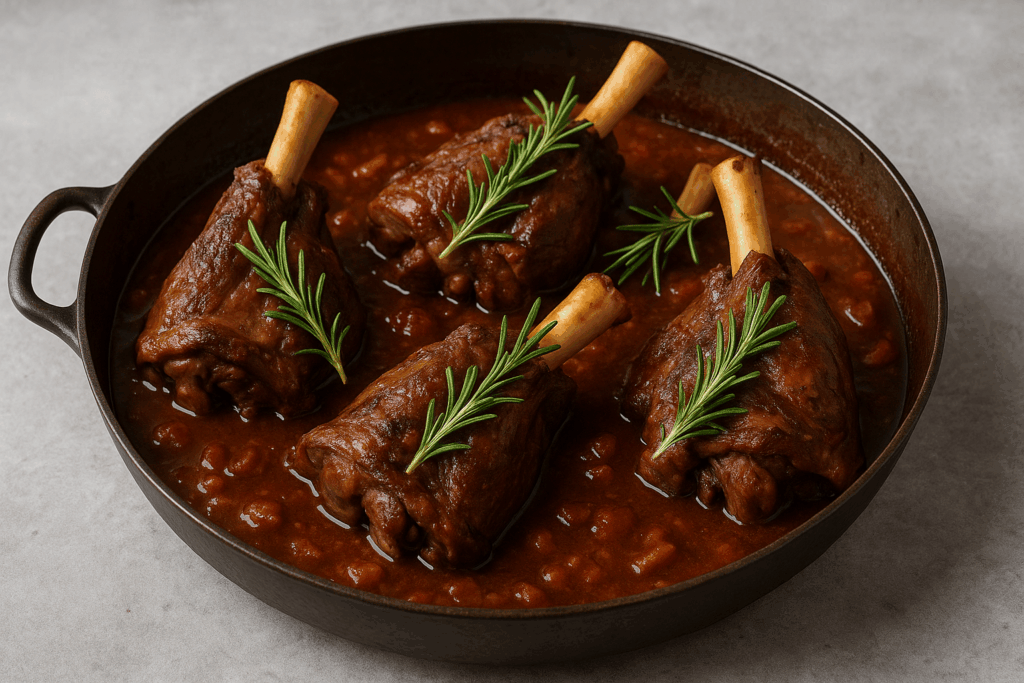
Lamb has a distinct, slightly gamey flavor that pairs beautifully with structured, aromatic reds. Cabernet Sauvignon is excellent for braised lamb shanks or roasts, offering bold tannins that balance the richness.
Syrah (Shiraz) brings peppery spice and dark fruit notes, enhancing lamb’s savory qualities. Tempranillo, from Spain, offers a smoky, earthy character that works wonderfully in Mediterranean or Spanish-inspired lamb dishes.
When cooking lamb, use wine in both the marinade and the braising liquid for layered flavor.
Best red wine for pasta sauce
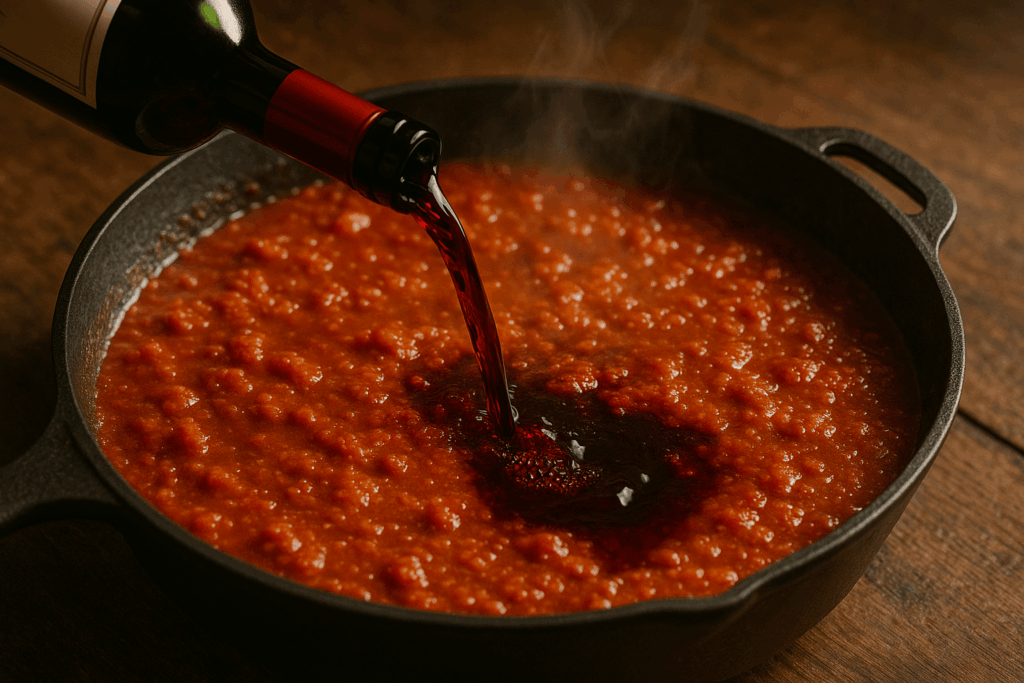
Tomato-based pasta sauces have high acidity, so they need a wine that can match without being overpowered. Chianti, made from the Sangiovese grape, is a natural pairing. Its bright acidity and subtle herbal notes echo the flavors of a classic marinara or Bolognese sauce.
Zinfandel brings a fuller, fruit-forward style that works beautifully in richer meat sauces, adding depth and a hint of spice. Montepulciano d’Abruzzo is another excellent choice, offering a smooth, easy-drinking profile that melds into everyday tomato sauces without stealing the show.
When using red wine in pasta sauce, add it early, allowing it to simmer with the tomatoes so the flavors integrate. This creates a harmonious balance between the wine’s fruitiness and the tang of the tomatoes.
Red wine dish pairing overview
| Dish Type | Recommended Red Wines | Best Cooking Technique | Flavor Profile in Dish |
|---|---|---|---|
| Roast or braised chicken | Pinot Noir, Grenache, Beaujolais | Braising, Deglazing | Light, fruity, subtle acidity |
| Beef stew / pot roast | Cabernet Sauvignon, Merlot, Shiraz | Braising, Slow simmering | Bold, rich, earthy |
| Tomato pasta sauce | Chianti, Zinfandel, Montepulciano | Simmering with sauce | Bright acidity, herbal notes |
| Grilled steak | Shiraz, Cabernet Sauvignon | Deglazing, Reduction | Peppery, smoky, concentrated |
| Pork tenderloin | Pinot Noir, Merlot | Marinating, Braising | Soft fruitiness, gentle spice |
| Lamb shanks | Cabernet Sauvignon, Syrah | Braising, Slow simmering | Deep, robust, aromatic |
| Mushroom risotto | Merlot, Pinot Noir | Deglazing, Reduction | Earthy, velvety, rounded |
| Poached pears or fruit | Zinfandel, Merlot | Poaching, Reduction | Sweet-spiced, fruity depth |
Red wine sauces and reductions
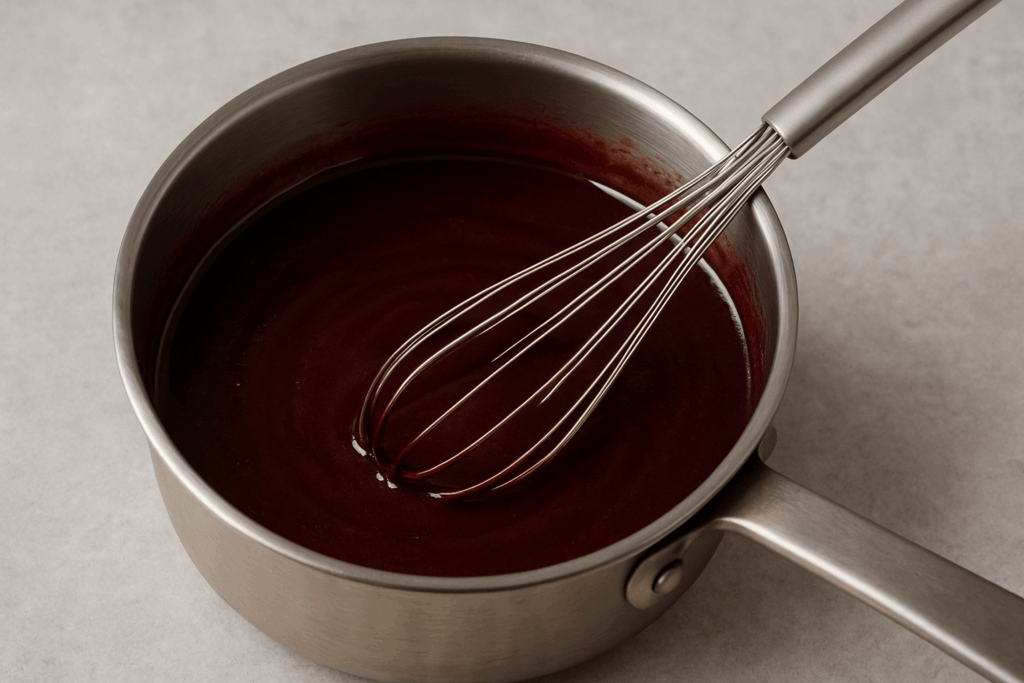
Red wine sauces are a restaurant favorite for a reason: they pack flavor into every bite.
- Classic red wine reduction – Simmer red wine with shallots until thickened, then whisk in butter for a glossy finish. Perfect over steak or duck.
- Demi-glace with red wine – A rich, concentrated sauce made by combining reduced wine with veal or beef stock. Ideal for roasts.
- Mushroom red wine sauce – Sauté mushrooms, deglaze with wine, then add stock and herbs for a rustic pairing with chicken or pork.
- Red wine pan sauce – After cooking meat, deglaze the pan with wine, reduce, and finish with butter or cream.
The key to any reduction is patience, simmer slowly so flavors intensify without burning off too quickly.
Cooking tips when using red wine
Using red wine in cooking isn’t complicated, but a few simple practices can make a big difference.
- Reduce wine to remove raw alcohol flavor and concentrate taste.
- Add early in slow-cooked dishes for depth, but sparingly near the end.
- Use wine to complement, not overpower, the main ingredients.
- Avoid “cooking wines”, they’re often poor quality with added salt.
- Store leftover wine in the fridge for up to a week, or freeze in portions for future recipes.
Conclusion
Red wine is one of the most powerful tools in a cook’s arsenal, capable of transforming a dish with just a splash. Choosing the right bottle is about matching intensity and flavor: lighter wines like Pinot Noir or Beaujolais for poultry, bold choices like Cabernet Sauvignon or Shiraz for beef, and acidic Italian reds for tomato-based sauces.
By experimenting with different cooking techniques, from deglazing to braising, you’ll find new ways to draw out wine’s complexity in your recipes. And with a decent mid-priced bottle, you can elevate your home cooking to restaurant-worthy results without overspending. If you’d enjoy drinking it, chances are it’s the perfect wine to cook with.

